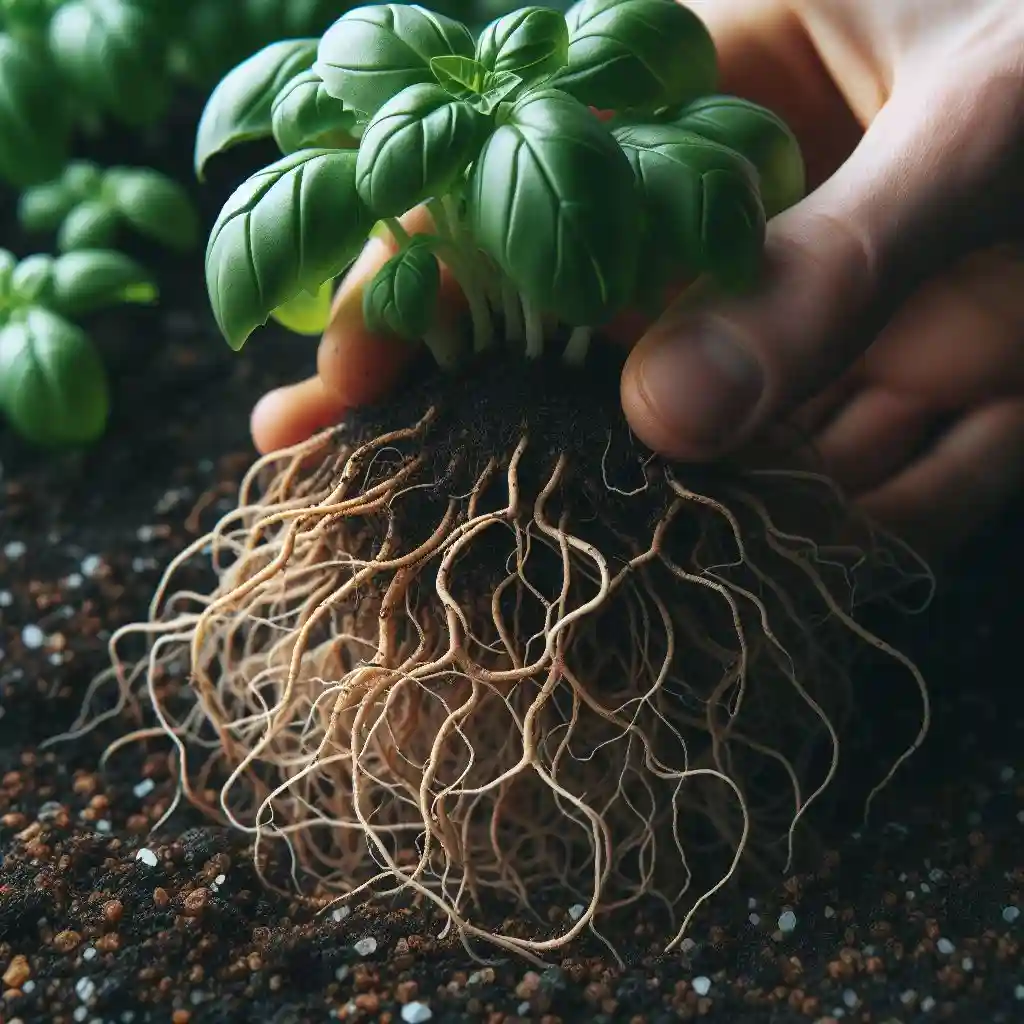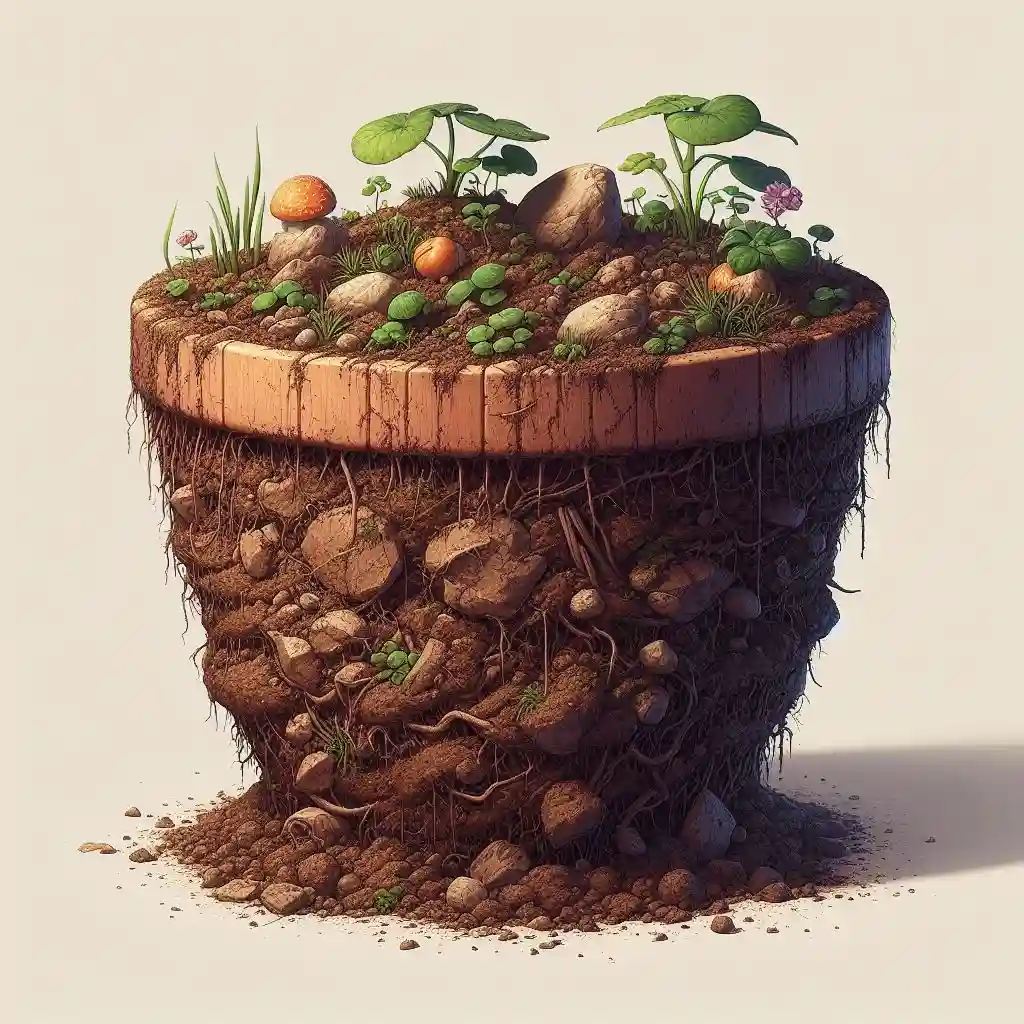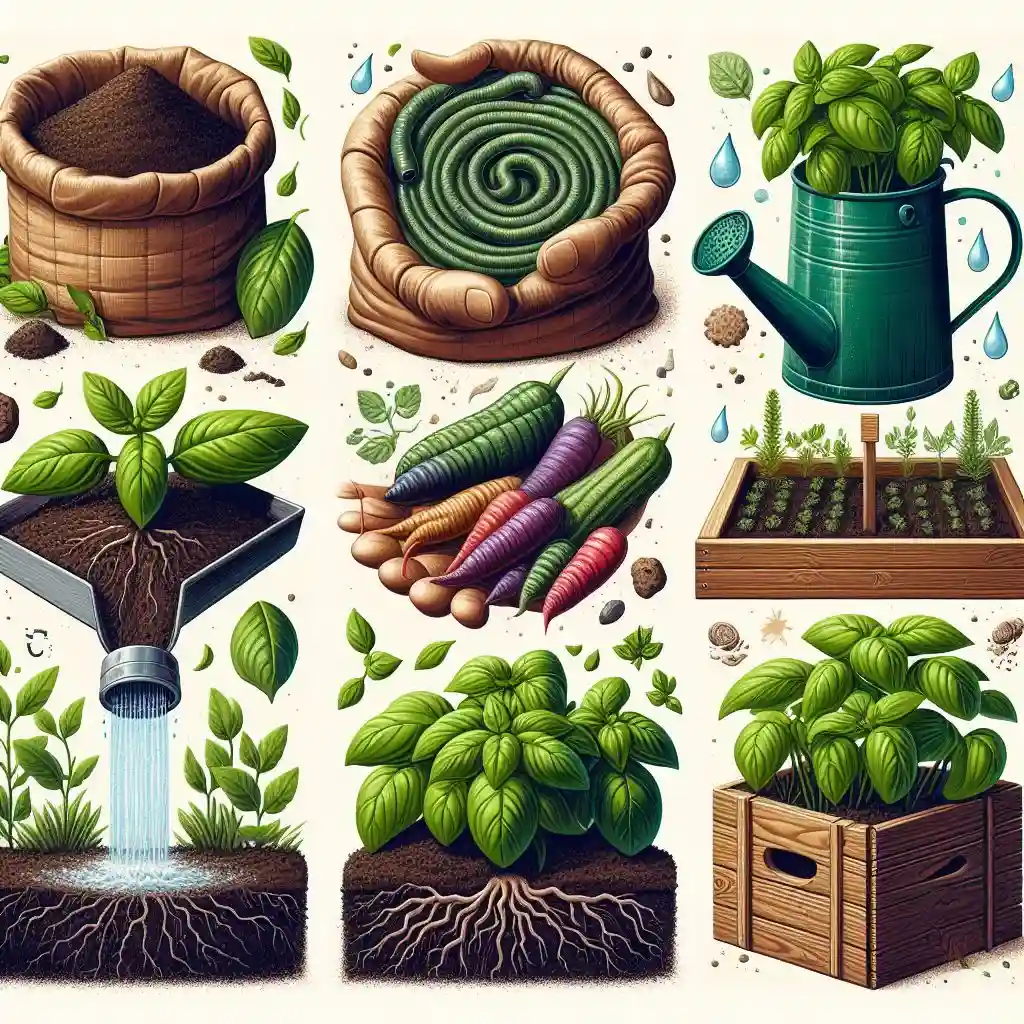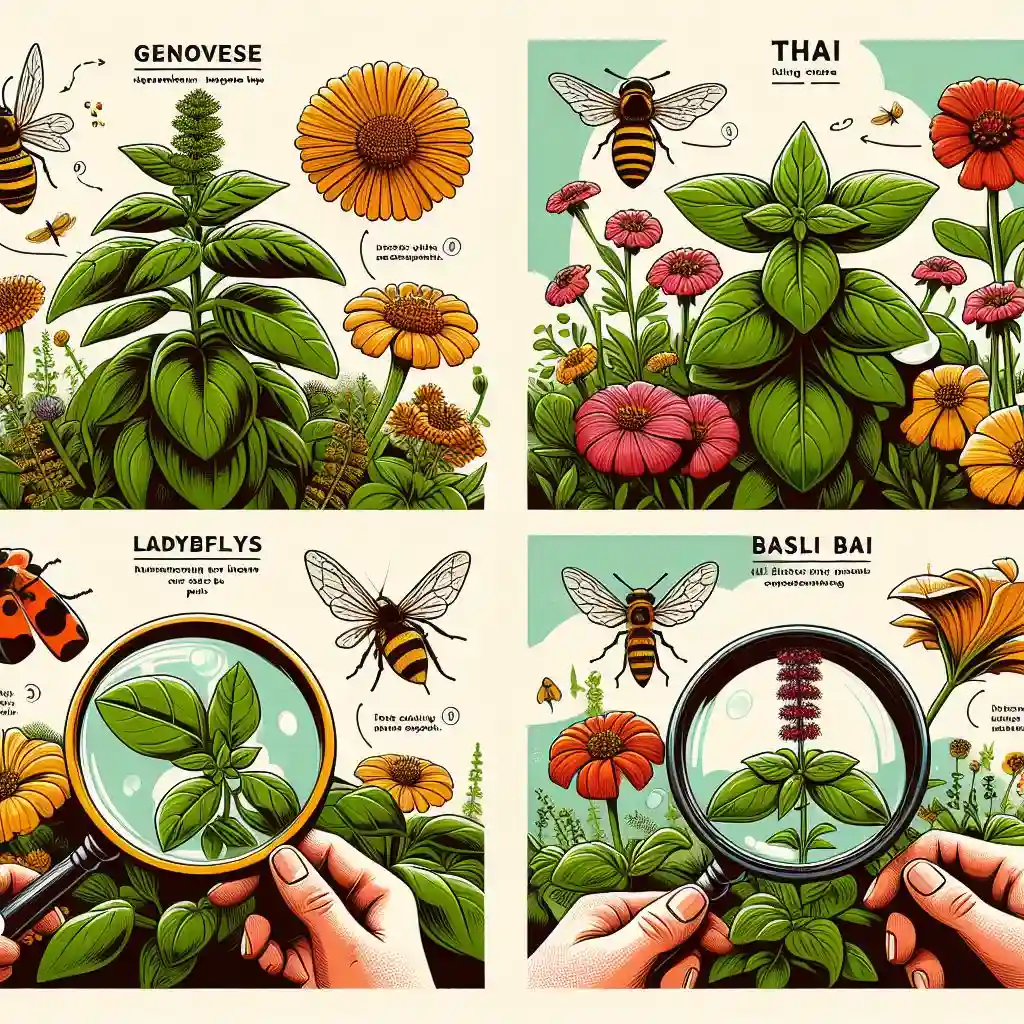Have you ever imagined a place full of healthy basil plants with shiny green leaves and a pleasant aroma? Sadly, a lot of basil dreams are shattered when the plants turn out weak, small, and with bland-tasting leaves. The reason? Often, we neglect the soil that our basil plants need to thrive.
When you search on Google, the first results might give you some advice, but they can also make you feel puzzled and uncertain. Sometimes, the information conflicts lacks details, and wrongly assumes that any soil will work for your basil plant. As a result, your basil might still be craving better care.
But Don’t worry, this guide is like a special tool that reveals 7 tried and true ways to make your basil plant go from sad to super impressive. Say goodbye to disappointing harvests and droopy leaves. We’re going to explore the fascinating world of soil and discover the hidden tricks to help your basil plants reach their full potential.
Demystifying the best soil for basil plant care: Beyond Just Potting Mix
Lush, emerald green basil leaves bursting with flavor, grace your culinary creations. To achieve this dream, understanding the best soil for basil plant care is crucial. It’s the foundation upon which your fragrant herb kingdom thrives. But unlike some online advice might suggest, it’s not just about any old potting mix. Let’s delve into the key characteristics of the perfect basil soil:

1. Drainage is King: Think of basil roots as thirsty, but not waterlogged, adventurers. They crave moisture yet abhor soggy feet. That’s why well-draining soil is paramount. Aim for a light, airy texture that allows water to flow freely, preventing root rot, a common basil nemesis. Sandy loam or a mix with perlite or coco coir are excellent choices.
2. Fertility Fiesta: Just like we enjoy delicious meals, basil thrives on rich, nutrient-rich soil. Organic matter like compost, aged manure, or worm castings acts as a delicious feast for the soil, providing essential nutrients for healthy growth and vibrant leaves. Remember, though, moderation is key – too much fertility can lead to leggy plants and weaker flavor.
3. The pH Perfect Party: Visualize a happy pH level as the perfect party atmosphere for your basil. It thrives in a slightly acidic to neutral range, between 6.0 and 7.0. Soil testing is your guide to knowing your soil’s natural pH and making adjustments if needed. Adding lime for raising or sulfur for lowering pH can help create the ideal balance for your basil bash. (For detailed soil testing and amendment guidance, consult your local gardening center or extension office.)
4. Beyond the Potting Mix Myth: While convenient, relying solely on standard potting mix might not be the best soil for basil plant care, especially in containers. These mixes often lack proper drainage and sustained fertility. Consider creating your custom blend or enriching store-bought mix with perlite, compost, or coco coir to optimize drainage and nutrient content.
5. Fabric Fantastic: Thinking outside the (clay) pot? Fabric pots offer a unique advantage for basil happiness. Their breathable fabric allows for excellent drainage and aeration, preventing root rot and promoting healthy growth. This is especially beneficial for basil, which can be sensitive to overwatering.

By understanding these key characteristics and tailoring the soil to your specific needs, you’ll be well on your way to creating the best soil for basil plant care, setting the stage for a flourishing herb haven. Remember, happy soil equals happy basil, and happy basil equals culinary adventures bursting with flavor!
Sources:
- Cornell University Cooperative Extension
- National Gardening Association
- University of California, Davis
7 Secret Soil Strategies for Unlocking Basil Bliss: From Seedling to Savory Sensation
Remember that dream of fragrant, verdant basil adorning your culinary creations? Now, let’s turn that dream into reality by unveiling 7 secret soil strategies for the best basil plant care. These powerful tips will transform your soil from just “dirt” into a thriving ecosystem, nurturing your basil from seedling to savory sensation:

1. DIY Magic: Craft Your Ideal Blend: Unleash your inner soil scientist! Create your custom blend for the best soil for basil plant care. A common recipe combines equal parts high-quality compost, perlite for drainage, and coco coir for moisture retention. Experiment with different ratios and ingredients like aged manure or worm castings to tailor the nutrient profile to your specific needs. Remember, research is your friend – consult gardening resources for guidance on ingredient ratios and potential benefits. For detailed DIY soil blend recipes, check out the National Gardening Association.
2. Amendment Arsenal: Boost & Balance: Think of amendments as targeted power-ups for your soil. For healthy basil growth, consider these options:
- Worm castings: Rich in nutrients and beneficial microbes, these “worm poop pellets” offer a slow-release, organic boost. (For in-depth guidance on specific amendments, check out university extension resources like Cornell University’s Cooperative Extension.)
- Blood meal: This nitrogen powerhouse provides a quick energy boost for young plants, but use it sparingly to avoid burning roots.
- Epsom salts: A source of magnesium, Epsom salts can promote chlorophyll production and overall plant health. However, remember that too much can be harmful, so apply according to package instructions.
3. Drainage Do’s & Don’ts: Avoid the Soggy Blues: Remember, basil roots crave moisture, not mud baths. Ensure proper drainage:
- In-ground: Choose raised beds or amend clay soil with sand or compost to improve drainage.
- Containers: Select pots with drainage holes and avoid overwatering. Consider fabric pots for enhanced aeration and drainage.
4. Mulching Magic: Lock in Moisture & Suppress Weeds: Mulch acts like a protective blanket for your soil, retaining moisture, suppressing weeds, and regulating soil temperature. Organic materials like straw, wood chips, or shredded leaves are excellent choices. Remember to leave a few inches of space around the stem to prevent stem rot.
5. Soil Testing Savvy: Know Your Numbers: Just like you get blood tests, your soil deserves a check-up too! Soil testing reveals its pH level and nutrient content, guiding you in creating the best soil for basil plant care. Purchase a home testing kit or consult your local extension office for professional analysis.
6. Watering Wisdom: Find the Balance: Watering is a balancing act. Aim for consistently moist soil, but avoid waterlogging. Deep watering less frequently is better than frequent shallow watering, encouraging roots to grow deeper. Adjust the frequency based on climate, pot size, and soil type.
7. Seasonal Shifts: Adapt & Thrive: Don’t let changing seasons catch your basil off guard! In hot summers, mulch more heavily and water more frequently. In winter, protect container plants from freezing temperatures and adjust watering as needed.
By implementing these 7 secret soil strategies, you’ll be well on your way to creating the best soil for basil plant care, fostering a thriving herb haven ready to grace your culinary creations with its vibrant flavor and aroma. Remember, happy soil equals happy basil, and happy basil equals endless culinary adventures!
Bonus Tips for Unlocking Basil Bliss: Beyond the Soil Basics
Now that you’ve mastered the secrets of the best soil for basil plant care, let’s explore some bonus tips to truly unlock basil bliss:

1. Choose the Right Basil Variety: Different basil varieties thrive in different climates. For example, Genovese basil loves hot summers, while Thai basil prefers warm, humid environments. Research varieties suited to your region and growing conditions for optimal success.
2. Companion Planting Power: Nature knows best! Attract beneficial insects like ladybugs and hoverflies by planting basil alongside marigolds, nasturtiums, or dill. These companions deter harmful pests and create a harmonious garden ecosystem.
3. Harvesting Magic: Timing is everything! Harvest basil leaves regularly throughout the growing season, pinching off the top leaves to encourage bushier growth. Avoid taking more than ⅓ of the plant at a time to maintain its health and vitality.
4. Troubleshooting Time: Even with the best soil for basil plant care, challenges can arise. Watch out for common issues like wilting, yellowing leaves, or pests. Research solutions based on the symptoms and address them promptly using organic methods whenever possible.
By incorporating these bonus tips alongside your newfound soil mastery, you’ll be well on your way to becoming a basil-growing pro! Remember, a little extra TLC goes a long way, and your efforts will be rewarded with an abundance of fragrant, flavorful basil leaves, ready to elevate your culinary creations to new heights. So, get out there, experiment, and enjoy the journey to basil bliss!
Conclusion: Cultivating Basil Bliss – Your Garden Awaits!
Remember that dream of a flourishing basil haven, bursting with vibrant leaves and intoxicating aroma? By delving into the secrets of the best soil for basil plant care, you’ve equipped yourself with the knowledge and tools to turn that dream into a fragrant reality.
Throughout this journey, we’ve explored the key characteristics of perfect basil soil, unlocked 7 powerful soil strategies, and even ventured beyond with bonus tips for overall plant success. Now, it’s time to put your newfound knowledge into action!
Remember, the key to basil bliss lies in consistent care and attention. Regularly monitor your soil moisture, adjust watering as needed, and don’t be afraid to experiment with different soil blends and amendments to find what works best for your specific environment.
As your basil thrives, don’t forget the joy of harvesting those beautiful leaves. Pinch off stems strategically to encourage bushier growth, and savor the fresh, aromatic rewards of your efforts. Share your culinary creations infused with basil’s magic, and inspire others to embark on their journey to basil bliss.
Remember, this guide is just the beginning. There’s a whole world of basil exploration waiting! Continue seeking knowledge, experiment with different varieties, and connect with fellow herb enthusiasts. The more you learn and share, the more your basil adventures will flourish.
So, what are you waiting for? Grab your gardening gloves, get your hands dirty, and cultivate your basil bliss – your fragrant, flavorful herb haven awaits!
Resource:
FAQ on Growing Basil with the Best Soil Care:
Q: What is the best soil for basil plants?
A: While a standard potting mix might seem convenient, it’s not always the best for basil. Aim for well-draining soil rich in organic matter like compost or aged manure. A good mix might be equal parts high-quality compost, perlite for drainage, and coco coir for moisture retention. Remember, adjust the ratio based on your needs and experiment!
Q: How important is drainage for basil?
A: Crucial! Basil roots love moisture but hate being waterlogged. Choose a light, airy soil like sandy loam or a mix with perlite or coco coir to ensure proper drainage and prevent root rot. Consider raised beds or amending clay soil for in-ground planting, and use pots with drainage holes for containers.
Q: What is the ideal pH level for basil soil?
A: Aim for a slightly acidic to neutral range, between 6.0 and 7.0. Conduct a soil test to know your soil’s natural pH and adjust with lime (to raise) or sulfur (to lower) if needed. Consult your local gardening center or extension office for guidance.
Q: Should I fertilize my basil plant?
A: Yes, but moderation is key. Basil thrives in nutrient-rich soil. Organic amendments like compost, worm castings, or aged manure provide essential nutrients for healthy growth. Avoid over-fertilizing, as it can lead to leggy plants and weaker flavor.
Q: How often should I water my basil plant?
A: Aim for consistently moist soil, but avoid waterlogging. Deep watering less frequently is better than frequent shallow watering, encouraging deeper root growth. Adjust the frequency based on climate, pot size, and soil type. Monitor your soil moisture regularly and adjust watering accordingly.
Q: What are some bonus tips for growing healthy basil?
Choose the right variety for your climate.
Plant basil alongside beneficial companion plants like marigolds or dill.
Harvest regularly, pinching off top leaves to encourage bushier growth.
Be observant and address any issues like pests or diseases promptly using organic methods whenever possible.